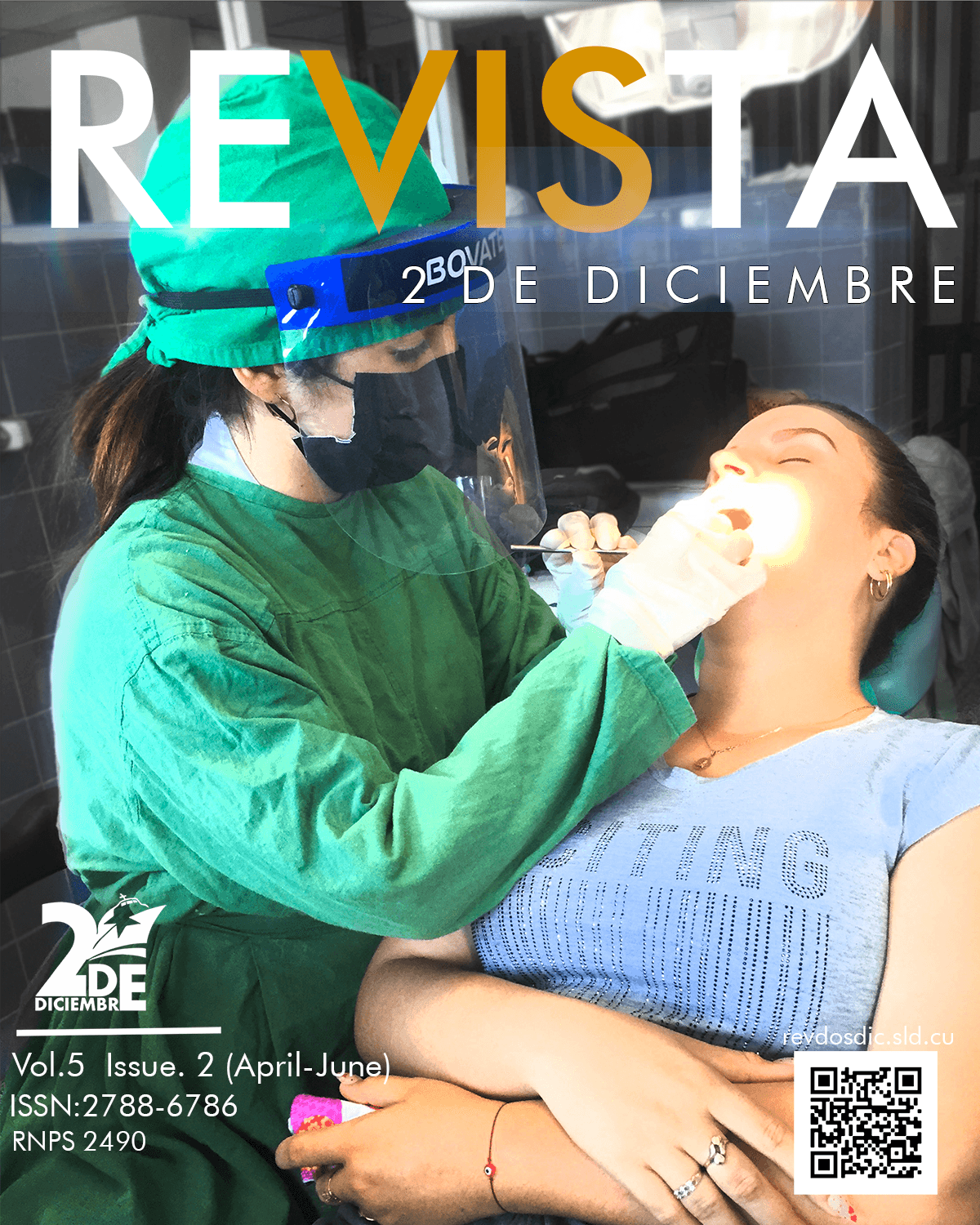Mucormycosis and COVID-19: a lethal combination
Keywords:
Mucormycosis, Covid-19Abstract
Dear Editor:
Mucormycosis is an angioinvasive infection caused by fungi of the order Mucorales. It is the third most important invasive mycosis, after Candida spp. and Aspergillus spp. infections, which are opportunistic, severe and rapidly evolving infections. The most important genera are Rhizopus, Mucor, Absidia and Cunninghamella 1 , with R. arrhizus (also called R. oryzae) being the most commonly found in humans with an incidence of 50-60 % 2 .
Mucormycosis fungal infection occurs normally in immunocompromised hosts under predisposing circumstances such as: diabetes, renal or hepatic failure, chemotherapy, therapy with immunosuppressive agents, neutropenia, leukemia, AIDS, tuberculosis, extensive burns, malnutrition, among others 2 , 3 .
The global pandemic of coronavirus disease 2019 (COVID-19) has infected more than 18 million people internationally ( 3 . Caused by coronavirus-2 (SARS-CoV-2), the disease can progress to acute respiratory distress syndrome (ARDS), a condition that increases susceptibility to fungal pulmonary co-infections 4 .
Several cases have been reported by dissimilar authors regarding the association between SARS-CoV-2 infection and mucormycosis fungal postinfection. Mekonnen ZK et al. 4 ) describe in their article a case of invasive fungal rhinosinusitis with orbital involvement in a patient with COVID-19 and discuss the prevalence of fungal coinfection with COVID-19, as well as the diagnostic and management challenges faced by critically ill patients.
After confirmation of Covid infection this case underwent intranasal tissue culture extraction and biopsy because clinical and radiographic signs that were highly suspicious for acute invasive fungal invasive rhinosinusitis with orbital involvement were found in the orbits and neck following CT angiography of the brain, orbits and neck. Histopathology demonstrated the presence of mucormycosis with angioinvasion.
As raised by Moorthy A et al. 5 in their study, the outbreak of mucormycosis cases in recovered COVID-19 patients in multiple centers in Bangalore city, India, during the last 6 months was of concern and was found to be clearly associated with treatment of the disease with corticosteroids. According to the authors, the incidence of the cases studied, qualifies as an epidemic of mucormycosis within the COVID-19 pandemic.
COVID-19 infection contributes in multiple ways to this invasion through the immune dysregulation that manifests as a reduction in the number of T lymphocytes. T cells can alter innate immunity by increasing the propensity for secondary fungal infections. The pathogenesis of COVID-19 resembles the spectrum of thrombotic microangiopathy (TMA) causing angioinvasion and endothelial damage much like mucormycosis, which aggravates the disease 6 .
Glucocorticoids have been widely used to reduce hospital stay and mortality related to COVID-19. Dexamethasone and methylprednisolone have been incorporated into most protocols in COVID-19 infection, especially in moderate to severe cases 7 . Due to the immunosuppressive nature of glucocorticoids, patients become more susceptible to secondary infections thus necessitating strict surveillance focused on early detection of this dangerous fungal infection in patients post COVID-19 infection.
Based on the above, the principle of multidisciplinary care in the follow-up of these patients is reaffirmed. The important role played by health professionals in the identification and timely treatment of an infection that can cause irreversible damage and even death, and which is not always given the required importance, is revalidated.
Downloads
References
1. Aldama Caballero A, García Duarte J, Aldama Negrete F, Insaurralde S, Mendoza de Sánchez G, Celías L. Mucormicosis rinocerebral. Reporte de 4 casos. An Fac Cienc Méd (Asunción) [Internet]. 2017 [citado 10 Abr 2022];50(3):77-82. Disponible en: http://scielo.iics.una.py/pdf/anales/v50n3/1816-8949-anales-50-03-00075.pdf
2. Bertin H. Mucormicosis rinosinusal. Rev Otorrinolaringol Cir Cabeza Cuello [Internet]. 2003 [citado 10 Abr 2022];63(3):122-6. Disponible en: https://www.sochiorl.cl/uploads/07(24).pdf
3. Julián Castrejón A, Crespo Reinoso PA. Mucormicosis rinocerebral: reporte de un caso y revisión de la literatura. Rev Mex Cir Bucal Maxilofac [Internet]. 2020 [citado 10 Abr 2022];16 (1):22-6. Disponible en: https://www.medigraphic.com/pdfs/cirugiabucal/cb-2020/cb201e.pdf
4. Mekonnen ZK, Ashraf DC, Jankowski T, Grob SR, Vagefi R, Kersten RC, Simko PJ, Winn JB. Acute Invasive Rhino-Orbital Mucormycosis in a Patient With COVID-19-Associated Acute Respiratory Distress Syndrome. Ophthalmic Plast Reconstr Surg. [Internet] 2021 [citado 10 Abr 2022]; 37 (2):40-3. Disponible en: https://www.ncbi.nlm.nih.gov/pmc/articles/PMC7927902/pdf/iop-37-e40.pdf
5. Moorthy A, Gaikwad R, Krishna S, Hegde R, Tripathi KK, Kale PG, et al. SARS-CoV-2, Uncontrolled Diabetes and Corticosteroids—An Unholy Trinity in Invasive Fungal Infections of the Maxillofacial Region? A Retrospective, Multi-centric Analysis. J. Maxillofac Oral Surg [Internet] 2021 [citado 10 Abr 2022];20(3):418-25. Disponible en: https://link.springer.com/content/pdf/10.1007/s12663-021-01532-1.pdf
6. Sweeny JM, Barouqa M, Krause GJ, Gonzalez Lugo JD, Rahman S, Gil MR. Evidence for secondary thrombotic microangiopathy in COVID-19. MedRxiv preprint [Internet] 2020 [citado 10 Abr 2022];1:[aprox. 33 p.]. Disponible en: https://www.medrxiv.org/content/10.1101/2020.10.20.20215608v1.full.pdf
7. The Recovery Collaborative Group. Dexamethasone in Hospitalized Patients with COVID-19—Preliminary Report. N Engl J Med [Internet]. 2020 [citado 10 Abr 2022];384(8):693-704. Disponible en: https://www.nejm.org/doi/pdf/10.1056/NEJMoa2021436?articleTools=true
Downloads
Published
How to Cite
Issue
Section
License
Authors who have publications with this journal agree to the following terms: authors retain their copyright and grant the journal the right of first publication of their work, which is simultaneously subject to the Creative Commons Attribution-NonCommercial 4.0 International License that allows third parties to share the work as long as the author and first publication in this journal are indicated, for non-commercial use. Authors may adopt other non-exclusive license agreements for distribution of the published version of the work (e.g., depositing it in an institutional telematic archive or publishing it in a monographic volume) as long as the initial publication in this journal is indicated. Authors are allowed and encouraged to disseminate their work via the Internet (e.g., in institutional telematic archives, in their web page or in Pre-print servers) before and during the submission process, which can lead to interesting exchanges and increase citations of the published work. (See The Open Access Effect).







